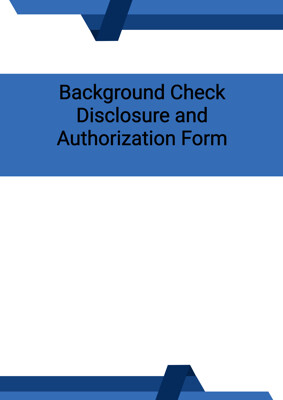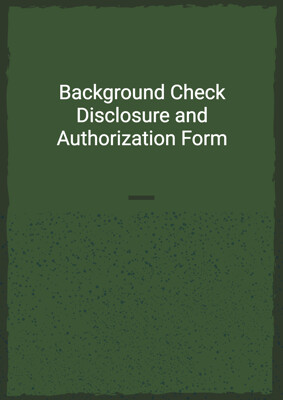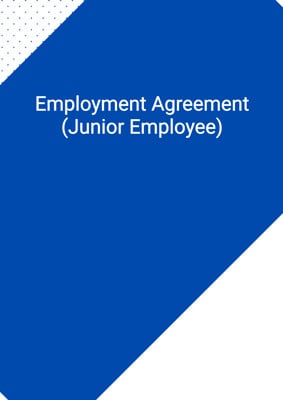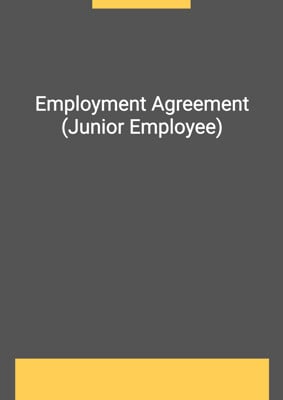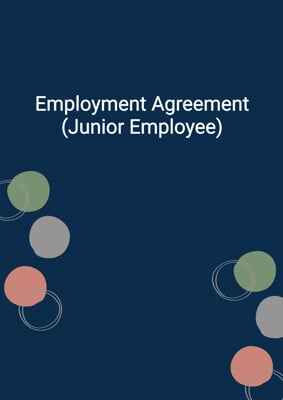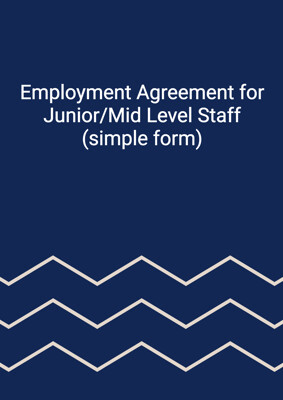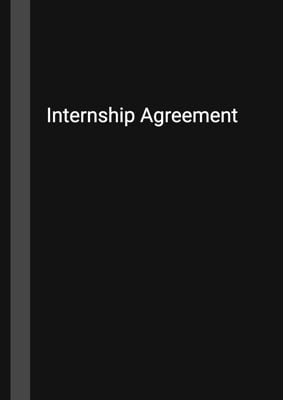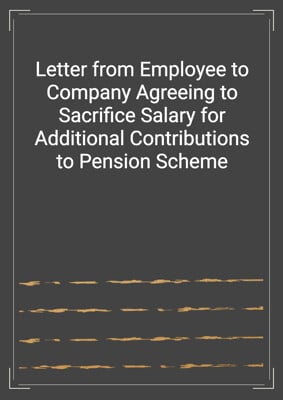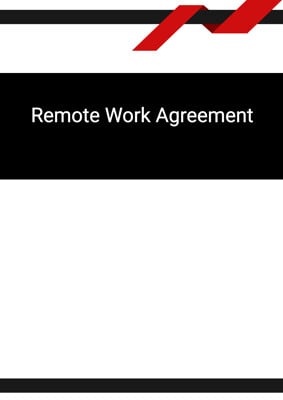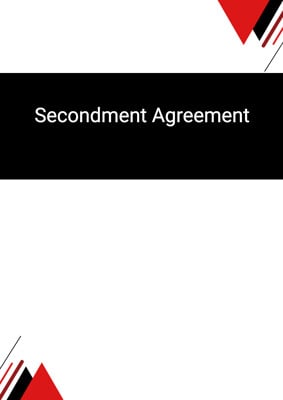How to Tailor the Document for Your Need?
01
Create Document
Fill in the details of the parties. You can click the "Fill with Member’s Information" button to complete it with information saved to your account.
02
Fill Information
Please fill in any additional information by following the step-by-step guide on the left hand side of the preview document and click the "Next" button.
03
Get Document
When you are done, click the "Get Document" button and you can download the document in Word or PDF format.
04
Review Document
Please get all parties to review the document carefully and make any final modifications to ensure that the details are correct before signing the document.
Document Preview
Document Description
The 'Employment Agreement (Junior Employee)' is a document that outlines the terms and conditions of employment between a company and a junior employee. This agreement is of utmost importance as it establishes the rights and responsibilities of both parties involved.
The document begins with a detailed introduction, stating the date on which the agreement is made and the parties involved. It also includes the addresses of both the company and the employee, ensuring that their principal places of business are clearly identified.
The agreement then proceeds to provide a comprehensive description of the duties and job description of the employee. It specifies that the employee is employed in a specific position and is expected to undertake all necessary duties associated with that position. The employee is also subject to the supervision, direction, and advice of the company and its supervisory agents.
Furthermore, the document highlights that the employee shall report directly to a designated individual within the company. It emphasizes that the employee may also be assigned additional duties that are incidental to their general job description or unrelated to their primary role.
The agreement specifies that the position is either full-time or part-time and is based in a specific jurisdiction. It also states that the company is responsible for providing all necessary facilities, equipment, and consumables required for the employee to perform their duties.
The period of employment is outlined in the agreement, stating the commencement date on which the employee will start working. It clarifies that the employment is for an indefinite period, subject to the terms of the agreement. The normal working hours are specified, with the acknowledgment that the employee may be required to work additional hours when the workload demands.
The agreement also addresses the employee's entitlement to annual leave, sick leave, and personal days. It states the number of paid annual leave days per year and the process for requesting leave. It also explains the carry-forward policy for unused leave days at the end of each year.
Additionally, the document covers the probationary period for the employee, stating its duration and the conditions for termination during this period. It clarifies that either party may terminate the employment without notice or payment in lieu during the first probationary month. After the first month, termination requires a notice period or payment in lieu.
The remuneration section of the agreement specifies the monthly salary of the employee and their enrollment in the relevant mandatory provident fund scheme. It also clarifies that the employee is responsible for their personal taxes.
The agreement includes provisions regarding discipline, confidentiality, termination, disputes, and intellectual property. It outlines the employee's obligations to abide by the company's rules and regulations, maintain confidentiality of the company's business secrets, and promptly disclose any conflicts of interest.
In case of termination, the agreement lists various circumstances under which the employment may be terminated, including breach of the agreement, death or incapacitation of the employee, withdrawal of permissions, conviction of a criminal offense, bankruptcy, gross misconduct, or serious breach of the agreement.
The agreement also addresses the resolution of disputes, stating that voluntary mediation should be attempted first. If mediation is unsuccessful, the parties submit to the non-exclusive jurisdiction of the jurisdiction state courts.
The document concludes by stating that any modification of the agreement must be in writing and signed by both parties. It emphasizes that the agreement is the entire agreement between the company and the employee, and any invalid or unenforceable provisions will not affect the remaining clauses. It also clarifies that no person who is not a party to the agreement has rights to enforce its provisions.
The employee's consent to the processing of their personal data, confidentiality obligations, and non-solicitation of the company's customers, clients, manufacturers, or suppliers are also included in the agreement. The agreement further addresses the employee's obligations regarding intellectual property and waiving any moral rights.
Overall, this employment agreement provides a comprehensive and detailed framework for the employment relationship between the company and the junior employee.
How to use this document?
1. Review the agreement: Carefully read through the entire employment agreement to understand its terms and conditions.
2. Provide necessary information: Fill in the required information, including the company's and employee's details, such as names and addresses.
3. Specify duties and job description: Clearly state the duties and job description of the employee, ensuring that it aligns with their position.
4. Determine the period of employment: Establish the commencement date and specify whether the employment is for a fixed term or an indefinite period.
5. Define working hours and leave entitlement: Clearly state the normal working hours, annual leave entitlement, and the process for requesting leave.
6. Address probationary period: Determine the duration of the probationary period and the conditions for termination during this period.
7. Specify remuneration: Determine the monthly salary of the employee and ensure enrollment in the relevant mandatory provident fund scheme.
8. Establish disciplinary rules: Clearly communicate the company's rules and regulations that the employee must abide by.
9. Address confidentiality and non-solicitation: Emphasize the importance of maintaining confidentiality and prohibit the employee from soliciting the company's customers, clients, manufacturers, or suppliers.
10. Clarify termination conditions: Clearly state the circumstances under which the employment may be terminated and the notice period required.
11. Address disputes: Encourage voluntary mediation as the first step in resolving any disputes related to the employment agreement.
12. Ensure compliance with laws: Ensure that the agreement complies with the laws and regulations of the jurisdiction state.
13. Seek legal advice if necessary: If you have any doubts or concerns about the agreement, consider seeking legal advice to ensure its validity and enforceability.
14. Sign and retain copies: Once the agreement is finalized, both parties should sign the document and retain copies for their records.
Not the right document?
Don’t worry, we have thousands of documents for you to choose from:

